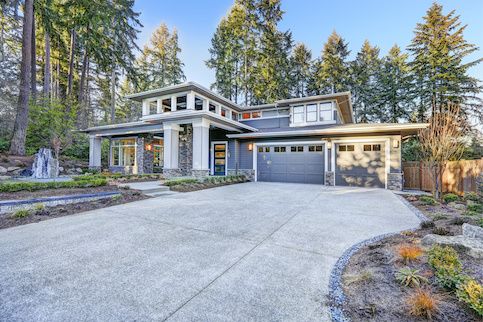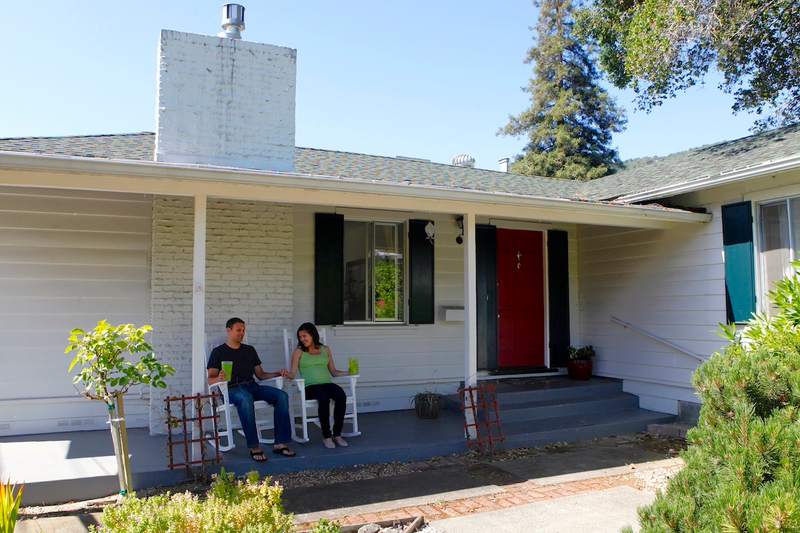Do you want to remodel your kitchen, consolidate debt or fund your child’s college education? A second mortgage can help you cover these types of expenses. Understanding second mortgages is vital in determining whether they’re a good financial fit for your situation, so let’s get into it.
How Does A Second Mortgage Work?
A second mortgage is a loan secured by a homeowner in addition to their primary mortgage. One of the advantages of a second mortgage loan is that the interest rates are typically lower than other types of debt. Many homeowners use a second mortgage to consolidate debt or renovate their homes.
A second mortgage utilizes your home’s equity, which is its current market value minus your mortgage balance. So, if you own a home worth $200,000 and owe $80,000 on your mortgage, you have $120,000 in home equity. Depending on your credit score and mortgage lender requirements, you may be able to borrow up to 90% of your home equity.
Lenders will allow you to offer your home equity as collateral because it is a valuable asset that protects their investment.
How To Apply For A Second Mortgage
Applying for a second mortgage uses essentially the same process as any mortgage approval, following these general steps:
- Get a home appraisal to determine your home’s value and equity. It may be wise to do some research online for an estimated value or consider getting a comp analysis by a real estate agent before paying for an appraisal. If your research shows that the estimated value is far below what you would need to get the second mortgage, you may want to consider waiting until your home value is higher or you’ve paid off more of your current loan.
- Review your budget to determine how large of a second mortgage you can afford.
- Determine the loan type that’s right for you.
- Compare mortgage lenders and apply.
- Provide necessary financials, including income, debts and investments.
- Sign the papers and finalize your second mortgage.
You can take out a second mortgage with your first lender or compare their offer to other lenders to find the best rate. Like your first mortgage, you can choose between fixed-rate or variable-rate loans, and your mortgage term can vary depending on your loan type.
See What You Qualify For
Buy A Home
Discover mortgage options that fit your unique financial needs.

Refinance
Refinance your mortgage to have more money for what matters.
Tap Into Equity
Use your home’s equity and unlock cash to achieve your goals.
Second Mortgage Vs. Refinancing
The main difference between getting a second mortgage versus refinancing is the amount of liens you have on your home after each transaction. After you receive a second mortgage, you will have two mortgage liens on your home that you will have to make separate payments on. With a refinance, you pay off your original mortgage and replace it with a new one. So you continue making only one mortgage payment but with new loan terms.
The two transactions also have a lot in common. Both require a credit check and commitment to shopping for the best loan terms. Cash-out refinances and second mortgages also both utilize your home’s equity.
Types Of Second Mortgages
There are two types of second mortgages: home equity loans and home equity lines of credit (HELOCs), which some mortgage lenders may not offer. While these mortgage terms sound similar, they’re two different financing options.
Home Equity Loan
A home equity loan is a lump sum payment in exchange for a percentage of your home’s equity. You may be a good candidate for a home equity loan if you know exactly how much money you need to borrow or like the idea of receiving all of your funds at once.
Once you close on a home equity loan, your lender takes out a second lien against your property, and you repay the borrowed amount plus interest through fixed monthly payments. Depending on the loan terms, you may have 5 to 30 years to pay off the loan. These loans are best for people who want to consolidate their debt and have a stable income to make the monthly payments.
Let’s examine the pros and cons of a second mortgage that’s a home equity loan.
Pros
- Fixed interest rates: Since home equity loans come with fixed interest rates, you’ll know your monthly payments in advance and can avoid unwanted financial surprises.
- Lump-sum proceeds: You’ll receive your money in a lump sum, so you’ll know exactly how much your loan will impact your budget.
Cons
- Closing costs and fees: You’ll likely have to pay for closing costs, usually 2% – 6% of the loan amount. In addition to closing costs, you may face an appraisal fee, title search and many other fees, depending on your chosen lender.
- Home is at risk: If you default on your home equity loan, the bank may foreclose your home.
Home Equity Line Of Credit (HELOC)
A HELOC also utilizes your home’s equity, but instead of receiving a lump sum payment, you receive access to a line of credit similar to a credit card. This structure involves a few extra features that differ from home equity loans:
- Draw period: This is the initial period lasting 5 to 10 years, during which you can withdraw whatever amount you need up to the credit limit.
- Repayment period: This is the time following the draw period, usually lasting between 10 to 20 years, in which you are not allowed to draw any more funds and must start making monthly payments toward the principal and interest on the amount you borrowed.
- Interest rates: HELOCs typically have lower interest rates than home equity loans, depending on the lender. However, the rate you start with may go up.
- Best for: Flexibility for borrowing and repayment, and homeowners with a strict budget to avoid over-borrowing.
Pros
- Flexibility: You don’t have to commit to a certain amount of money with a HELOC. You only use what you need.
- Delayed payments: Your payments won’t begin until you withdraw the money, at which point you’ll pay interest payments on the money you use until the draw period ends and full repayment begins.
Cons
- Variable interest rates: HELOCs have a variable interest rate that fluctuates based on the market. If the market’s prime rate increases, your HELOC rate will also increase, making it difficult to budget your repayments.
- Annual fees and other costs: You may be on the hook for a yearly membership or maintenance fee. Your lender may also charge an inactivity fee, minimum withdrawal fee or early termination fee, among other costs. Talk to your lender beforehand to know what fees they may charge.
- Risk of foreclosure: Like with a home equity loan, a HELOC uses your home as collateral, so the bank can take it if you don’t repay what you borrow.
What To Consider Before You Get A Second Mortgage
There’s no denying that a second mortgage offers some significant advantages. However, just like with any financial product, there are some consequences you should bear in mind before you take one out.
Below are additional pros and cons to help you plan for a second mortgage.
Pros
- Larger loans: Second mortgages offer loans based on your equity, so the more equity you have, the larger loan you can get.
- Lower interest rates than other debt: Since your second mortgage uses your home for collateral, lenders can offer a lower interest rate than unsecured loans or credit cards.
- No restrictions on how you use your loan: Whether you’re going back to school, paying for a wedding or want to renovate your home, you can use your second mortgage funds how you see fit.
- Interest is tax deductible: Interest paid on second mortgages used for home improvements or builds is tax deductible.
Cons
- Higher mortgage rates: Because you’re also responsible for paying off your primary mortgage, second mortgages may have higher interest rates than refinancing or your first mortgage.
- Second mortgage payment: With a second mortgage, you’re responsible for a second mortgage payment, including interest and fees. Be sure you can cover the costs without financial hardship.
- Risk of foreclosure: Since a second mortgage uses your home as collateral, your lender can file for foreclosure if you fail to pay.
- Closing costs: You will have to go through the closing process on the loans, including the fees that can cost 2% – 6% of the loan.
- Additional fees: You may have to pay an appraisal fee, title search fee, and others depending on your lender.
Make sure to read the fine print of your second mortgage carefully before signing. Knowing the details of your mortgage and having a plan in case of financial hardship is always best to avoid foreclosure.
Second Mortgage FAQs
Here are the most common questions about second mortgages.
How do I qualify for a second mortgage?
Requirements can vary between lenders and loan types, but they generally include:
- Proof of employment and income
- At least 20% equity in your home
- Credit score of 620 or better
- Debt-to-income ratio (DTI) below 43%
These factors will also determine your interest rate and total loan approval. The better your credit score or the more home equity you have, the less risk you pose to lenders, and the better your offers will be.
How large is a second mortgage?
The size of a second mortgage depends on the amount of equity you have built up. Lenders typically allow you to borrow up to 90% of the value of your equity.
What’s the difference between a home equity loan and a HELOC?
Home equity loans provide a lump sum payment at a fixed amount. HELOCs provide a line of credit, allowing you to choose how much you need to borrow up to the credit limit.
Should I refinance my home loan or get a second mortgage?
If you can get a better interest rate or loan terms, it may be best to refinance your home. If you want to keep the terms of your original mortgage but need cash to consolidate debt or make a large payment, a second mortgage may be right for you.
The Bottom Line
A second mortgage turns your home’s equity into cash that you can use for anything. There are plenty of benefits, like a larger loan approval with lower interest rates than personal loans or credit cards, but they also put your home at risk of foreclosure and increase your monthly housing costs.
Now that you know what a second mortgage is, you can decide if a home equity loan or a cash-out refinance is right for you.

Patrick Russo
Patrick is a writer and researcher with expertise in real estate and insurance. When he is not writing, you can find him hanging out with his family and friends or walking around Washington, D.C., listening to an audiobook.












